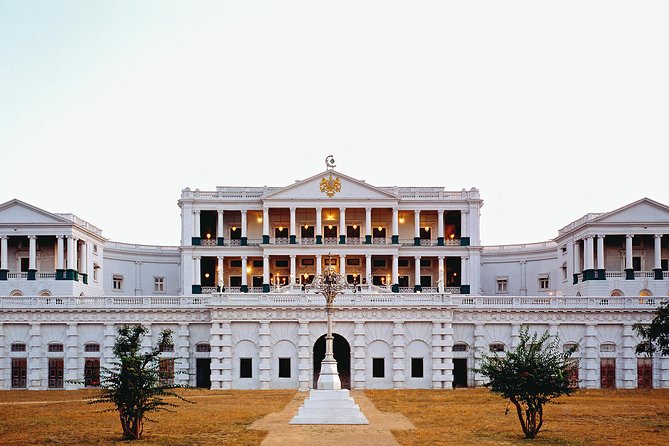
From 1894 to Today: A Statistical Journey Through Falaknuma Palace’s History
Falaknuma Palace, a magnificent structure in “Hyderabad,” has stood as a symbol of royalty, elegance, and history since 1894. Over the years, it has witnessed the grandeur of the “Nizams,” the transformation of Hyderabad, and its rebirth as a luxurious heritage hotel. This blog takes you on a journey through the numbers that define its fascinating past and present.
The Origins of Falaknuma Palace
Built in 1894, Falaknuma Palace was commissioned by Nawab Vikar-ul-Umra, the Prime Minister of Hyderabad. Spanning 32 acres, the palace sits at an elevation of 2,000 feet above sea level, offering a breathtaking view of the city. Designed in the Italian and Tudor architectural styles, the palace was constructed using imported materials from across the world.
The Nawab spent a fortune on this project—around 40 lakh rupees at that time. However, financial difficulties forced him to gift the palace to the sixth Nizam, Mir Mahbub Ali Khan, in 1897. Since then, it has become a residence for the Nizams, housing rare artifacts, books, and furniture from different parts of the world.
The Nizam’s Era: A Royal Residence
During the rule of the seventh Nizam, Mir Osman Ali Khan, Falaknuma Palace served as a royal guesthouse. It hosted dignitaries, including King George V, Queen Mary, and the last Viceroy of India, Lord Mountbatten. The palace had one of the largest collections of books in India, with over 60,000 manuscripts stored in its library.
The grand dining hall, which seats 101 guests, became a symbol of the Nizams’ extravagant hospitality. The palace’s Belgian chandeliers, about 40 in number, illuminated its halls, and the jade collection inside was considered one of the finest in the world.
Falaknuma After 1948: Decline and Restoration
After Hyderabad’s integration into India in 1948, the palace lost its importance. For decades, it remained closed and neglected. The vast halls and intricate carvings gathered dust, and the once-glorious interiors faded.
However, in 2000, the Taj Group of Hotels took over the restoration project. With an investment of nearly 100 crore rupees, they worked on reviving the palace’s lost charm. The restoration process lasted for ten years, involving skilled artisans and craftsmen who ensured that every detail matched the original grandeur.
The Modern Era: Taj Falaknuma Palace
Reopened in 2010, “Falaknuma Palace” transformed into one of India’s most luxurious heritage hotels. Today, it features 60 rooms and suites, each designed to reflect the Nizami heritage. The property includes a spa, fine-dining restaurants, and guided heritage walks.
The cost of staying in one of its suites can go up to 5 lakh rupees per night, making it one of the most expensive hotels in India. Despite the high prices, the hotel remains a favorite among celebrities, politicians, and royalty from around the world.
Statistical Milestones of Falaknuma Palace
- 1894: Construction completed by Nawab Vikar-ul-Umra
- 1897: Palace gifted to the sixth Nizam
- 1948: Hyderabad joins India; palace falls into disuse
- 2000: Taj Group begins restoration
- 2010: Reopened as a luxury hotel
- 60,000: Books in the palace’s library
- 101: Guests seated in the grand dining hall
- 40: Belgian chandeliers illuminating the halls
- 5 lakh INR: Cost per night for a luxury suite
“Falaknuma Palace” is more than just a historical monument; it is a symbol of Hyderabad’s rich past and cultural heritage. From a royal residence to an abandoned structure and finally a luxury hotel, its journey is a testament to the changing times. Whether you visit for its history, architecture, or luxury, Falaknuma Palace continues to stand as a masterpiece that connects the past with the present.